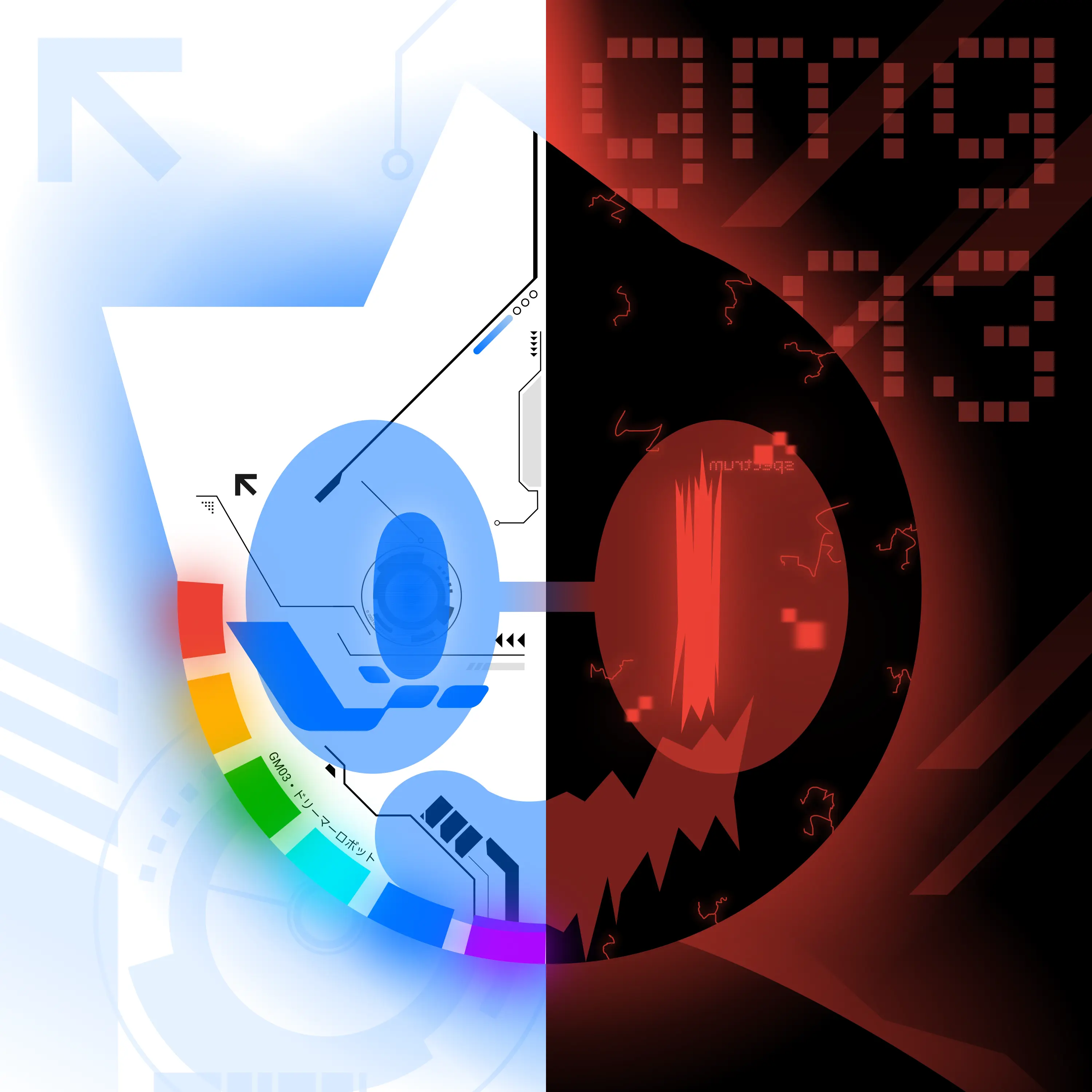Not op but thought this may be interesting
Folks… is it happening? Is M$ giving people undeniable reasons to leave their shitcosystem?
Yes. The reasons are not enough for many people but for many others they are. Just look at the market share stats of the last 3 years or so
Yup, I’ll be moving over rather than go to win11, ads on my lock screen and search bar nearly made me jump from win10 and there is no way in hell I going to even try to deal with clippy3.0/cortana2.0
Welcome to the fold, comrade!
As a Linux user I see nothing really wrong with Win11 at least compared to Win10. I use both in a VM
Increased customer data collection, an ai “assistant” that might require registry editing to remove (I already did this once to kill Cortana for good), and it will require me to reformat my os drive. If I have to reformat and do a fresh install I might as well change OS and be free of their fucking ads as well.
Well I just turned off everything with Group policy as my machines are in an AD domain.
They’re even helping!
https://learn.microsoft.com/en-us/linux/install
I mean, Blind mostly (only) plays Dwarf Fortress, which works awesomely on Linux. GG.
Apparently we have a trend. How interesting
I think I just block people who post these at this point
Hi have just moved to Linux 2 weeks ago after being fed up with windows 11. I am using fedora workstation and so far I am loving it.
He’s happy with it so I’m happy for him!
Interesting point, however, is that the only major issues he had were with OBS and him macro keypad, and everything else worked for him. That is a very good thing imo. It’s a testament to how far Linux has come. Now we just need to ensure all the Wayland work gets completely done across all desktops and then it’s a matter of time before even stable and “conservative” systems like Debian and Mint get it all supported, at which point Linux will be ready for all, and we can move our focus to Mobile Linux and whatever else the next new big and shiny thing is on the desktop (Personally, I think the only issues after these would be making sure accessibility is all well and good, getting GNOME to finally support VR, and that’s about it. I can’t think of anything else).
Of course, for every story/video/etc. of someone smoothly transitioning, there’s a thousand more that have basic non-starters because of certain applications/hardware, too many bugs or simply gave up in frustration.
Do you have any idea how hard it is to go from Linux to Windows?
Nightmare. The bloody thing keeps on wanting to peek up your skirt (even if you don’t wear one)
I’ve only had two mentionable issues with Linux so far: A GPU bug that causes a few games to reliably hang my GPU (which may have been fixed recently with newer mesa drivers; I haven’t checked), and Helvum not recognizing anything (which was probably me installing it wrong or something).
Windows however… Changing system settings with no warning, forgetting network configuration out of the blue, GPU crashes that hard rebooted windows, and driver updates that prevent booting at all. Some software gets installed without notice, others get removed without notice. The forced update debacle has lost me more than one open document. I’ve had critical audio issues on every machine I’ve used, including individual school machines that should be identical. Several of my remaining windows machines have issues with various system programs maxing out the disk write speed and locking up everything for dozens of minutes at a time.
And then more recently there’s the security violations, always online behavior, enshitification, and removal of user choice.
This may be a tad biased as I’ve used windows for a few decades and Linux for just over a year, but going back is always a chore…
Do you have any idea how hard it is to go from Linux to Windows?
I do. It’s a MASSIVE Pain in the ass, especially if you’re looking for minimalism, performance and a tiling window manager, as Windows can’t provide either of these.
And there’s also the spyware and other stuff. I just remember hating one of my lecturers in college for using Visual Studio in the first year (Y1), and using Excel in Y2, for the modules she taught, meaning I had to use Windows for them. Luckily, for the first assignment in Y1, and the second assignment in Y2, I didn’t actually need Windows, and for the second assignment of Y1, I just did it in class on the college’s Windows machines. But Y2, first assignment I did a Windows dualboot cuz I unfortunately didn’t have time to do it in class.
Anyways, point is that I associate Windows with bad memories. While I associate Linux with good ones.
“Anyways, point is that I associate Windows with bad memories. While I associate Linux with good ones.”
Me too. I use Arch/Kubuntu … actually!
I think there should be some work to do with Flatpak as well, but nothing major since it’s mostly there.
Can someone tell me what channel the video is from?
The post is a tracking link and I can’t find the video searching for the title.
Its a youtu.be link as long as it doesn’t have the si there’s no tracking info on it, just the video ID.
TIL, thanks.
Although now I wonder what the difference and purpose is of having these two formats:
https://youtube.com/watch?v=WjABILVAz5Y https://youtu.be/WjABILVAz5Y
I guess it’s a little shorter but the regular link isn’t long by any means.
The [youtube(.)com] link is the actual website that you watch the video on which can have a crap load of extra stuff like playlist info, highlighted comment info, where you came from, and probably more. The links can get really long, like 100+ characters.
The [youtu(.)be] link is a redirect website who’s only purpose is to reduce the size of the link to just the watch ID and timestamp. It dumps even the query language to keep the links under 30 characters or so.
Such link shorteners (such as bit(.)ly or tinyurl) were popular when Twitter was getting big and the character limit was an SMS message length; 140 characters. youtu(.)be in particular helped avoid bait and switch scams (as you can tell it’s definitely a video instead of going in blind) and it has the watch ID so titles, thumbnails, and embeds still work.
Thanks for taking the time to explain it so thoroughly. It’s appreciated!
I think the second format also allows for specifying the timestamp, so you can link to a certain point in the video
First one can do that too
Ah nvm then, idk either
deleted by creator
Here is an alternative Piped link(s):
https://piped.video/watch?v=WjABILVAz5Y
https://piped.video/WjABILVAz5Y
Piped is a privacy-respecting open-source alternative frontend to YouTube.
I’m open-source; check me out at GitHub.
https://youtube.com/watch?v=WjABILVAz5Y
The channel is called Blind.
Here is an alternative Piped link(s):
https://piped.video/watch?v=WjABILVAz5Y
Piped is a privacy-respecting open-source alternative frontend to YouTube.
I’m open-source; check me out at GitHub.
Here is an alternative Piped link(s):
https://piped.video/WjABILVAz5Y
Piped is a privacy-respecting open-source alternative frontend to YouTube.
I’m open-source; check me out at GitHub.
I’m trying but arch won’t even let me use the terminal to install anymore.
Why are you trying to install arch, it is not a noob-friendly distro
So I can say “I use Arch by the way.”
Says who? The days when this was true are long gone. Ubuntu is no longer the user friendly everyman’s desktop system anymore. Arch is extremely user friendly, just not the installation process. I find it to be much less of a pain in the ass to use than Debian based systems. For one, you have the Arch User Repository, so you’re very unlikely to need to not be able to find some software you want, and more importantly, so many packages in Debian are out of date and they take forever to update them, stuff often breaks because the version needed as a dependency for something else is not in the repositories.
For people who want to use arch but don’t want to manually do everything I highly recommend EndeavorOS. You fly through a wizard, just like Mint or something desktop oriented, and you wind up with a nice, working environment, but it’s Arch tooling instead of Debian tooling. The biggest and for most people only noticeable difference is the package manager, and pacman is so much more robust than apt.
I get frustrated online when I see people saying “Ubuntu is the most user friendly distro” or “arch is not for noobs”, this stuff was true like 10 years ago, that’s no longer the case. Ubuntu is user hostile, and there are arch derivatives that are basically arch with a graphical installer, which is the only part of using arch that is hard for people who aren’t hardcore nerds. It’s not like Gentoo or Void or Alpine or Nix or running a BSD system or something advanced like that.
Ubuntu is no longer the user friendly everyman’s desktop system anymore.
Agreed.
Arch is extremely user friendly, just not the installation process.
I do wonder what your definition of user friendly is. Cuz I can’t fathom how you can think that a distro that subscribes to what’s quoted below can (by any stretch of the imagination) be considered user friendly.
Which simple means that you have to check if you can update before you actually perform an update. That’s just wild.
And you know what’s most curious about this, we’ve actually solved (within Linux) issues related to updating your system. You read that correct, it’s a solved problem. And I hope that you’ll benefit from these advancements even if you continue to use Arch.
Btw, please don’t come to me with packages that automatically pop up in terminal to inform you about manual intervention. On my system, updates occur automatically in the background and with some black magic shenanigans (or just great engineering) it ‘fixes’ itself without requiring any manual intervention from me. That pop-up message in terminal can’t compete with that.
I find it to be much less of a pain in the ass to use than Debian based systems.
That’s subjective, but sure; you’re absolutely free to think that.
For one, you have the Arch User Repository, so you’re very unlikely to need to not be able to find some software you want, and more importantly, so many packages in Debian are out of date and they take forever to update them, stuff often breaks because the version needed as a dependency for something else is not in the repositories.
Distrobox exists. Moving on.
and pacman is so much more robust than apt.
What do you mean with robust here? And what makes you think that
pacmanis much more robust thanapt? Thank you in advance for clarifying/elaborating!I get frustrated online when I see people saying “Ubuntu is the most user friendly distro” or “arch is not for noobs”, this stuff was true like 10 years ago, that’s no longer the case. Ubuntu is user hostile, and there are arch derivatives that are basically arch with a graphical installer, which is the only part of using arch that is hard for people who aren’t hardcore nerds.
Honestly, I actually agree with you. Ubuntu has indeed lost all of its credibility. And Arch is absolutely not as bad as people make it out to be. But! In an environment in which Linux Mint, Zorin OS, Pop!_OS, Bazzite are mentioned; Arch simply is (by contrast) the lesser option in terms easy of use etc. So, while in absolute terms, it’s definitely not as bad as peeps make it out to be. It is, compared to the earlier mentioned distros, simply less newbie friendly.
It’s not like Gentoo or Void or Alpine or Nix or running a BSD system or something advanced like that.
Thankfully, no one ever bothers to recommend these to new users 😉.
So, to be clear, these are clearly too advanced and thankfully people never recommend these to newer users. However, while Arch isn’t that bad and thus can be used by some newbie users, it should IMO only very very carefully be recommended to new users. If it’s the kind of person that likes to learn as they go and enjoys reading documentation, then (by all means) it’s absolutely fine to recommend it. But you won’t find them that frequently…
What do you mean with robust here?
If you’ve ever “held broken packages” you’ll know what I mean by robust. I’ve had an entire distro upgrade break in Debian, it seems with a Debian system, eventually, you’re wiping and reinstalling because something broke. I have had this happen to every single Debian system I’ve installed since the gnome2 days.
When I talk about Debian and arch, I’m also talking of their downstream distros. So Mint would be a desktop oriented downstream distro for Debian. It inherits all the problems that come along with Debian, just as Manjaro or EndeavorOS would inherit anything that comes along with running arch. This is all in addition to any issues caused by those distros themselves.
I wouldn’t recommend any new person install arch, in fact I don’t even do it because I get tired of the installation process. I’d recommend someone install EndeavorOS, which is just arch without the installation issues. If someone wants a Debian based system, I’ll recommend Linux Mint, but if you don’t already know why you want a Debian based system, if you’re just looking for a desktop that works, I’ll recommend EndeavorOS because the underlying Arch system is just IMO better than a Debian system.
Also, I used to be a gnome2 guy, then Mate and then xfce, but these days I find xfce breaks on upgrade no matter what system it’s running on, and it’s incredibly bloated these days. So now I recommend KDE, I find it to be really nice, though I don’t use it (I’m nuts and so run a tiling Wayland setup) but for people looking to replace windows, just have a desktop that’s close to what they’re used to, I’ll say EndeavorOS with KDE, or secondarily, Mint with KDE, and I think that about covers anyone’s general desktop needs.
Thank you for your reply!
If you’ve ever “held broken packages” you’ll know what I mean by robust. I’ve had an entire distro upgrade break in Debian, it seems with a Debian system, eventually, you’re wiping and reinstalling because something broke. I have had this happen to every single Debian system I’ve installed since the gnome2 days.
I’m relatively new Linux user (just over two years now), so please bear with me. But, did I understand you correctly, that you hint towards the curious observation that rolling distros in general are technically ‘immortal’ while point-release distros eventually implode on themselves? If so, wouldn’t it be more correct to attribute this to the release model (i.e. point vs rolling) instead? Because, IIRC, this issue persists on openSUSE Leap, but doesn’t on openSUSE Tumbleweed. While both utilize
zypperas their package manager.When I talk about Debian and arch, I’m also talking of their downstream distros. So Mint would be a desktop oriented downstream distro for Debian. It inherits all the problems that come along with Debian, just as Manjaro or EndeavorOS would inherit anything that comes along with running arch. This is all in addition to any issues caused by those distros themselves.
But, if you noticed, I didn’t actually explicitly mention Arch’s install or its unopinionatedness as its downfall; which are indeed solved by its derivatives. The problem is with updates. At least on Debian and Ubuntu LTS, packages are (mostly) frozen and thus updates are in general non-existent and thus are not able to cause issues. The inevitable implosion happens once every two years at worst. Is that bad? Sure. But does it cause any trouble within those two years? Nope. And honestly, I don’t blame anyone that simply prefers to worry about updates once every two years instead of daily.
I wouldn’t recommend any new person install arch, in fact I don’t even do it because I get tired of the installation process. I’d recommend someone install EndeavorOS, which is just arch without the installation issues. If someone wants a Debian based system, I’ll recommend Linux Mint, but if you don’t already know why you want a Debian based system, if you’re just looking for a desktop that works, I’ll recommend EndeavorOS because the underlying Arch system is just IMO better than a Debian system.
Once again, installation is not the problem. I would like to kindly remind you that I haven’t even mentioned it once in my previous comment.
OK, so Debian is not rolling release, arch is. If rolling release causes the system to implode, doesn’t that make arch more user friendly?
I’m the one that’s says the only thing unfriendly about arch is the installation. That’s a point I’m making. And truth be told, most of what a user interacts with is the DE, installation is the only real sticking point between all these systems at this point, that and package management. Outside of installation and the package manager they’re basically the same as far as the casual user is concerned. And for arch, once you get past the installation, it’s package manager is just better than apt. And EndeavorOS does the installation for you. So it’s better.
If rolling release causes the system to implode, doesn’t that make arch more user friendly?
Actually my point was that point release distro seemingly implode at some point 😅. But, I’ll assume that you meant point release here. Then, I’d argue, if you really dislike reinstalling, then Arch scores better at that. But we don’t measure how user friendly a distro is on just a single metric. That doesn’t make sense.
I’ll quote the main body in which my argument against Arch being user friendly has been laid out. I hope you’ll respond this time:
I do wonder what your definition of user friendly is. Cuz I can’t fathom how you can think that a distro that subscribes to what’s quoted below can (by any stretch of the imagination) be considered user friendly.
“Note: It is imperative to keep up to date with changes in Arch Linux that require manual intervention before upgrading your system. Subscribe to the arch-announce mailing list or the recent news RSS feed. Alternatively, check the front page Arch news every time before you update.”
Which simple means that you have to check if you can update before you actually perform an update. That’s just wild.
And you know what’s most curious about this, we’ve actually solved (within Linux) issues related to updating your system. You read that correct, it’s a solved problem. And I hope that you’ll benefit from these advancements even if you continue to use Arch.
Btw, please don’t come to me with packages that automatically pop up in terminal to inform you about manual intervention. On my system, updates occur automatically in the background and with some black magic shenanigans (or just great engineering) it ‘fixes’ itself without requiring any manual intervention from me. That pop-up message in terminal can’t compete with that.
it’s package manager is just better than apt
Earlier you called it more robust. I laid out the fault in your logic. But you didn’t care to react to it… Regardless, if it’s only speed that makes you think that, then please just say so.
agreed ubuntu is kinda shit but arch is hard (to setup post-installation) for a new user imo. You should try kde neon or smth which I’d consider to be a nice beginner distro
How is arch hard post installation?
Here’s an example:
https://wiki.archlinux.org/title/NextcloudCompare that to Ubuntu:
https://snapcraft.io/install/nextcloud/ubuntuor even Slackware:
https://slackbuilds.org/repository/15.0/network/nextcloud-server/The wiki just likes to make the details available. Installation of nextcloud is as easy as
pacman -S nextcloudYou’re comparing a simple install guide with the entire detailed documentation of a package. of course the package docs are going to have more details.
Ignoring details is not the same as being user friendly. Having a bunch of corpo marketing pictures of slightly above average people smiling on video chat in your installation docs does not make something user friendly. Is this really the metric we are going by, how little information is in the documentation?
After pacman -S nextcloud you don’t have a functioning Nextcloud. You’re still missing the web server, php, caching, etc. And all of it needs to be configured manually to work with Nextcloud.
After installing the Snap on Ubuntu or the Slackbuild on Slackware, you do have a functioning Nextcloud that lets you connect to it via the web frontend and finish the setup.
-
Rolling release means no stable API which can result in incompatibilities.
-
Bleeding edge mean you’re essentially the guinea pig for most changes.
-
pacnew/pacsave files means you HAVE to use the terminal.
-
AUR packages become unmaintained or broken often.
-
It’s expected you read the news before updating your system.
-
It’s expected you update your system periodically.
-
Pacman doesn’t automatically enables services installed, meaning that you need to run systemctl commands after installing a new service.
-
It is expected you read the wiki.
None of these are actual problems, and for even intermediate users they’re well worth it since in turn you get bleeding edge packages, a gigantic user repository that normally just works, and an excellent wiki to get answers. But for someone who’s never used Linux before, each of these is a huge problem in and of themselves.
Edit: reading some of your other replies I remember some more:
-
Having to forcefully uninstall a package so it gets updated because of limitations with pacman, e.g. you have packages A, B and C, all installed on version 1, you do a system upgrade, A now requires B to be version 2, but it won’t get updated because C depends on B, you need to manually do
pacman -Rdd B, then update, thenpacman -S B(this last step is not usually needed since A would have pulled it as a dependency). This problem is so common that you eventually don’t even notice it anymore, you see the message and uninstall the offending package intuitively. Also worth noting thatpacman -Rddcan easily break your system. -
Pacman uses a file lock, if something made it crash the file lock remains and needs to be manually removed.
-
PGP signatures updates require you to update certain packages before others.
-
You can easily break your system by doing something naive like
pacman -Sy <something>. -
Package cache doesn’t get cleaned automatically.
I have never, once, run into an issue due to rolling release. I have never once read the news before updating. I’ve never had an update on arch break my system, never.
“Bleeding edge” is beta or alpha releases, people running those are the guinea pigs. All packages in default arch repositories are release versions, intended for use by users.
It is always expected to update your system periodically, no matter what distro or even software you’re using.
None of these are actual problems
Yes, and I argue that this is true of new users as well.
normally just works
Yes, very user friendly
excellent wiki to get answers.
Yes. All users of systems, new, intermediate, advanced, and of any system, including windows and Mac, google stuff sometimes and look for information. This is probably one of the most important components for any software, the more easy it is to find information the better it will be. You can’t find anything up to date on Ubuntu anymore, you’re in a forum with a post from 2008 following outdated information.
expected to read the wiki
yes, when using software it is expected that at some point you’ll want to look at documentation, so documentation needs to be detailed, accurate and up to date.
This problem you’re talking about with packages A B and C and wrong versions and stuff, I’ve never run into it. I’m sure it can happen, but I’ve never seen it. I have run into it on Debian based systems, every time I’ve tried to run one for a few months I get broken dependencies and stuff due to mismatched versions. Basically every problem after your edit applies to all package managers, forcing yes on dialogs (the “y” in -Sy) is always dangerous, “apt purge” and “apt autoremove” to clean cache and remove unneeded dependencies, this stuff isn’t unique to pacman, and again, I’ve only ever seen it on Debian, it’s theoretically possible on arch but a guarantee on Debian that you’ll run into these problems.
But we are getting lost in the weeds. Give someone an endeavorOS installer and a Linux Mint installer, will there be a noticable difference in ease of use? No, there won’t, generally what determines user friendliness is the DE. The few things they could get stuck on are in the terminal, that applies regardless of the distro, and the big difference is the package manager, and like I’ve said, I’ve never had pacman break, I’ve had apt break something every time I’ve run it for a few months.
forcing yes on dialogs (the “y” in -Sy)
That’s not what the y means, and that’s not the issue with that command. Please at the very least read the manual or the wiki of the distro you claim to know before replying to someone who just told you has been using it for 15 years.
Give someone an endeavorOS installer and a Linux Mint installer, will there be a noticable difference in ease of use?
Yes, all of the issues I mentioned are not issues with Mint.
I’m not claiming Arch will break if you don’t read the news, or spend a week without updating, but what you’re missing (possibly because you only recently started using Arch) is that all of these things do happen and are expected to happen, it’s part of the philosophy.
Whereas many GNU/Linux distributions attempt to be more user-friendly, Arch Linux has always been, and shall always remain user-centric. The distribution is intended to fill the needs of those contributing to it, rather than trying to appeal to as many users as possible. It is targeted at the proficient GNU/Linux user, or anyone with a do-it-yourself attitude who is willing to read the documentation, and solve their own problems.
In other words Arch is by definition NOT noob friendly on purpose.
-
For starters you don’t have to worry about installing bluetooth stacks, or a network interface to control your wifi (if they somehow don’t end up installing a whole DE package group)
In what? What???
Nope, Arch is not noob friendly, you have been using Linux for long enough that you forgot how everything was different when you started. Also Arch hasn’t changed much in 10 years (I should know, I have been using it for 15), if it wasn’t noob friendly before, it’s certainly less so now that it doesn’t has an installer and the wiki makes you jump from one page to another instead of having all of the steps for installation in a single place.
I agree that Ubuntu is not ideal, which is why my recommendation is Mint. I also agree that Arch is not hard. But if you give a new user who just wants things to work Arch you’re setting it up for disaster.
For users that are familiar enough with Linux that they feel comfortable on the terminal, yeah, Arch is a breeze to use, but you need to understand the difference between “power user friendly” (which is what Arch is, i.e. allows power users to have an easy time, by for example having a large user repository) vs “beginner friendly” (which is most definitely what Arch is not, i.e. give users an easy out of the box experience where they can figure things out without needing to read wiki pages). Most new users need a beginner friendly distro, and shoving Arch down their throats is not the way to do it.
I switched to Linux about a year ago and I agree with the poster you replied to I used fedora for about a week before switching to arch based endeavor OS and I’ve been on EOS ever since. The install truly is the only hard part of arch.
Read my other comment, if you don’t think those are issues you either are not as noob as you think, or you haven’t encountered any of those yet https://lemmy.world/comment/10431667
Dude thank you, someone who actually tried what I’m recommending weighing in.
You can always just try endeavouros. Its pretty much arch with calmaries installer. It even uses official arch repos










